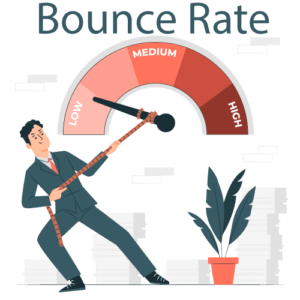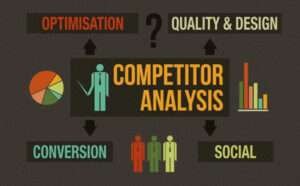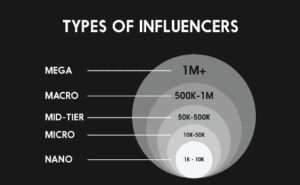
Content Strategy Design and Marketing Calendar
When starting a business, many people wonder where and how to grow and develop their business. They face many questions and challenges. Questions such as:
- What is the purpose of content production?
- What content should be produced, and how often?
- Who is the target audience?
- When do audiences have access to content?
- What value does the content have for the audience?
- Which channel does the audience access our content?
- What is the impact of content marketing on business?
- What is the goal of content marketing?
- What is a content calendar?
Here we will issue what content strategy is and why it is important. Also, how does creating a marketing calendar help businesses?

Why is Content Strategy Design Important?
Content Strategy is a relatively new discipline in digital marketing, and its main purpose is to achieve business goals. It is a comprehensive and all-encompassing approach to creating content and driving key business objectives. In other words, it is the knowledge and skill to create, distribute and maintain valuable and useful content.
A successful and targeted content strategy design helps a business to provide the right content to the target audience, in the right way and at the right time. It will help you implement your creative ideas. This process can help you to discover how executing a high-quality content strategy can benefit your business. Designing content strategy can also assist you in using content to increase sales, promote your brand, and engage your customer base. In summary, it is based on data; and it provides the ability to produce, publish and manage content that is in line with the goals of the brand and the user.

How to Design an Effective Content Strategy?
Creating a content strategy is a multi-step process that involves different parts. To design and develop a content strategy, follow the steps below:
- Define and Set a Goal
In the first stage, define a goal for content. You should specify exactly the aim of developing a content marketing plan. In marketing strategy, different types of content can be used to meet certain objectives.
2. Conduct Research
The next stage is research about competitors and customer base. You should clearly determine your content’s target audience to develop a successful design. By knowing the target audience, you can produce more relevant and valuable content to get their attention. Note revisiting audience parameters by conducting market research each year is crucial to growing your audience.
3. Run a Content Audit
A content audit involves the content you already have available. In this stage, find the content that needs to be updated, edited, combined, or eliminated. Decide which part is the most successful and which has fallen flat. Collecting this information will help you better use your resources and not produce repetitive content. Content audit helps to identify weaknesses and strengths.
4. Choose a Content Management System (CMS)
Designing content strategy involves using a dependable management system with proper planning. This system helps organize each step of the creation process. This includes content creation, publication, and analysis. In web design, you can select a CMS to create, manage, and track your content easily and sustainably. You May plan, produce, publish, and measure your results all in one place with the HubSpot CMS.
5. Determine which Type of Content
You can use different options to determine the type of content. The most common options are written content such as eBooks and blog posts and audio content such as podcasts.
6. Brainstorm Ideas for Content
When the fundamental structure of strategy is in place, it’s time to start coming up with ideas for content. Brainstorming content is a great idea. This stage involves choosing formats and assigning tasks. You can achieve innovation by using the diverse ideas of group members.
7. Publish and manage the Content
The final stage of designing a content strategy is distributing the content to the public (website, email newsletter, marketing campaign). The marketing plan should go beyond producing textual content. With the help of a marketing calendar, you can use social media content to promote and manage your content on other sites.
The Key Components of a Successful Content Strategy Design
A useful and functional content strategy usually includes the following components:
- Goals and Vision: Designing a content strategy often involves explaining how the content will help increase sales, better engage with customers, and meet company goals.
- Plan for Marketing: Once the content is created, the content strategist consults with the marketing team on how they can best share it. A marketing consultant is an important principle in content creation.
- Audience overview: A crucial part of designing content is knowing the audience. Content should make the best impression on potential customers.
- Channels and Platforms: In the content strategy, it is very important to choose the channels and platforms where the content is to be distributed. Media and social networks are among the most popular platforms.
- Keyword Focus: Focusing on keywords is a strategic factor in content, which leads to the greatest connection with the market and customers.

Types of Content Strategy to Create
An important step in creating a successful content strategy is deciding which type of content will have the best impact on your target audience community. There are many different content types and distribution methods that you can integrate into your content strategy.
The most important of them are:
- Blog Posts: The purpose of a blog post is to share valuable content to attract visitors to your website.
- Media: This type of content is a great way to share and attract a wide audience.
- Infographics: Infographics are a way to present information visually and are an exciting element to add to your content strategy that will create quality and shareable content.
- Social Media Posts: Social media posts are shared using social media platforms. Publishing this type of content optimizes the content for search engines, and you reach visitors completely different from your target audience.
- Surveys: A survey is a type of questionnaire content that allows the audience to share their opinions. By using surveys, you will collect valuable data that you can use to shape your marketing campaigns.

Tips for Effective Content Strategy Design
One of the most important points in content strategy is to consider the audience’s needs. Content can be used to inform, educate, guide, or entertain. Expand your focus and create more public content to interact with your customers. Content that is too specific will be incomprehensible to many audiences. Content should be fact-checked and carefully proofread. Prioritizing content design makes customers trust your business and recognize your brand. Good content should be consistent across all channels and platforms. Content should be searchable. The most common methods for this are using search keywords, simplifying the copy, and using eye-catching photos. Be unique. Your content must be superior to your competitor’s content. Content may need to be long, short, in-depth, general, practical, theoretical, academic, or conversational. Unique content is one of the best ways to differentiate yourself from competitors.
The Importance of Having a Marketing Calendar
A content marketing calendar is a document that charts all marketing activities in an organization for the entire year. A marketing calendar is a basic plan to keep a company’s marketing plan on track. It is a vital principle for business success. This calendar will help you plan and organize campaigns. If you want a coherent marketing campaign, use a marketing calendar to organize things. It helps you decide when to send content, social media posts, or emails. When you use a marketing calendar, you give credibility to your brand. This calendar is a great way to ensure your business is at the top of every campaign.

Benefits of Using a Content Marketing Calendar
The content marketing calendar helps you to design and plan your content marketing strategies in a correct and useful way.
The most important advantages of creating this calendar can be mentioned:
- Set deadlines and expectations: The most obvious benefit of having a marketing calendar is the ability to plan and track plans.
- Determine duties and responsibilities: A content marketing calendar specifies who is responsible for delivering each part of the plan and when.
- Organize the message: Another advantage of the content marketing calendar is the management and visibility of the company’s messages. For example, your calendar might include executive guides or e-books, blog post titles, webinar titles and presentations, details of advertising campaigns, and email marketing campaigns.
- Track the marketing budget: Marketing budgets are often set at the beginning of the year. In some cases, you can use this calendar to add or remove the budget.
- Understand the big picture: Everyone can see how their marketing efforts work together. The calendar also allows the company to plan according to seasonality and special holidays.

How to Create a Marketing Calendar
When developing a marketing calendar, act based on your needs and goals. Follow the steps below to create a calendar:
- Manual or digital calendar: The first step to creating a marketing calendar is deciding what kind to design. Often, the electronic version takes less time and is less likely to be lost or destroyed. For this, you can use Microsoft Excel or Word, Google Sheets, and special calendar software.
- Determine your goals: Your goals should focus on your desires and expectations. The most common of these goals are getting new leads, making money from sales, and increasing brand exposure.
- Identify your strategies: The most important of these strategies are email marketing, click advertising (PPC), social media marketing, and content marketing.
- Determine your target audience: To have an effective marketing strategy, it is necessary to know the target audience. Therefore, it is necessary to consider the common characteristics of your customers, such as age, gender, and shopping habits, and be aware of their interests, hobbies, employment, and social and economic status.
- Chart your sales cycle: To plan a successful calendar, map out your sales cycle. In This way, you get accurate information about the seasonal sales of your products.
- Specify important dates: For better planning, important dates such as holidays, and milestones in the company, add new product or service launches and company events to your marketing calendar.
- Estimate the duration of each project: After determining the appropriate strategies, you need to consider how long the projects will take. In fact, one of the most important components of how to create a marketing calendar is planning your projects properly so that you can complete them on time.
Conclusion
A content marketing strategy and calendar is a program in which different types of content (audio, visual, and/or written) are used to achieve business goals in businesses. A successful content strategy engages your target audience at every stage, even after purchase. Content Strategy is the art of providing the right content at the right time, place, and context. This type of strategy covers content planning, development, and management.
Marketing calendars are one of the most effective tools in content strategy, and many businesses use them to organize and divide their various responsibilities. A marketing calendar specifies marketing activities, initiatives, and events for a period of time. The content strategy includes targeting, brand identity, persona, competitor analysis, keyword research, determining content distribution channels, and developing a marketing calendar. In general, determining the content production strategy and designing the marketing calendar are considered the most essential tasks for the growth and development of businesses.

















































